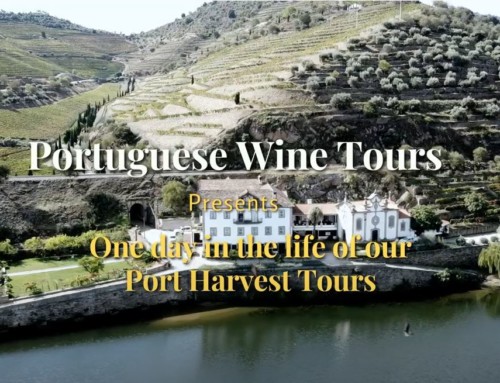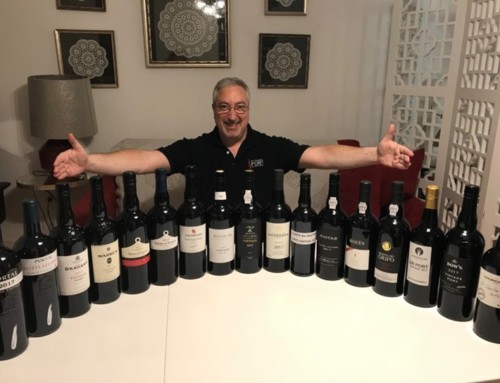Over the course of the past year and a half, ever since the release of Taylor's Scion, an ancient cask-aged Port from 1855, I've read many articles on this particular Port. Additionally, lots of posts appeared on UK/USA-based wine and Port forums, from experts and novices alike, and it seemed that so many questions arose, mixed with a dose of speculation and hyperbole ratcheted up to fever pitch.
Some questioned the veracity of whether Scion was actually from 1855. Others called its authenticity into question based on nothing more than mistaken evaporation-curve-math, misconceptions of Douro bake and storage conditions in old cellars there, including wildly inaccurate assumptions based on misunderstanding how/when/why Ports are topped off or refreshed. One conspiracy theorist went far out on a limb, to link the timing of the release of Scion to the needs for funding of The Yeatman Hotel. To make a long story short: the "naysayers" were having a field day, albeit, badly misinformed.
Fortunately, Adrian Bridge stepped in to correct such myths and fallacious guess work that arose and we now have a very clear and fact-based picture providing the truth about Taylor's Scion. Here are those facts, as relayed by Mr. Bridge, CEO of The Fladgate Partnership, earlier today:
Scion
There are several issues being raised about Scion that need to be discussed and I will try to cover the points as I see them a) the history of the wine b) the question of topping up and refreshing c) the evaporation rates d) the technical specifications of Scion and e) aging potential.
We purchased the Ports that went into Scion from a family who have owned and operated in the Douro for many generations. The farm where the Port was stored is in Prezegueda, which is alongside the Corgo river valley and therefore in a cooler, wetter part of the Douro.
The family had stored the wine in the same location since it was made. There were two sisters who did divide this old wine a number of years ago and we understand that another Port shipper purchased the other sister’s wine some 8 to 10 years ago and used it in blending their 30 year old.
We were shown family records and we believed this to be a genuine Port from 1855. We had it tested by the IVDP to obtain their opinion as to the age of the wine. The Port was held in 6 casks and had not been moved for over 20 years. The casks were ullaged and we took sufficient to make the 1,100 liters that we purchased. Therefore, Scion is a blend of the same wine held in different casks.
The loading process was accompanied by our head wine maker – David Guimaraens and another of our winemakers Manuel Aranha and a photo record was made – see annex 1.
We cannot say that the wine was not topped up as it is logical that the wines could have been to reduce the ullage. This is a normal process and records may not always be kept. However, we can be fairly certain that the wine was not refreshed – younger Port placed in it – as this would show up on the technical analysis of the residues. Equally, we can be certain that the wine was not moved often as it has a very low lead level – 208 parts per billion. Lead is collected in wine when moved through brass fittings and old ports often have lead levels much higher than this. (Before anyone gets excited we know that this is over the current legal limit but exceptions are made for very old Ports).
The question over evaporation is interesting but the posts that have been made assume that evaporation is a linear function that can simply be compounded. This is not the case. Ports will evaporate more in early years and then will reach a level of stabilization where the evaporation will drop to a very low level. This is particularly so of Ports that are not moved. The level of sugar does increase as does the total acidity – see below. There is an error being made that aging in the Douro will always produce a Douro bake – as in the case of Graham 1952. This is not always so and does depend on the conditions of the storeage. We have made the statement many times that had Scion been aged only a few miles further east, or in a south facing winery, or a windier location it would not be what it is. Indeed, historic buildings often had very good natural temperature control that is now required to be replicated with technology in thin walled buildings.
We very often see old Ports and we buy them for blending. They are normally not suitable to be bottled alone. Our technical area did originally propose the purchase of these Ports for blending. However, I suggested that we make a special bottling because the Port was so balanced and so exceptional. We had never done something like that before and may never do so again.
The second point on evaporation is that people have referred to Madeira. On that island they store their wines in heated lodges to encourage oxidation – by the logic of some contributors to the thread they would quickly have none left if temperature was the only factor.
Finally the analysis of Scion shows it to be a Port of great age and, we believe from 1855 as the family records indicate. We cannot make that age statement on the bottle because to sell a colheita the Port must be registered with the IVDP. The fact that the IVDP did not exist in 1855 would have made that hard but the requirement to register was even later. That is why it is sold as ‘over 40’ from the formal special category registrations within the IVDP but they allow it to be labeled as ‘very old’.
Scion has 189 grams per liter of residual sugar, 8.76 grams per liter acidity expressed in Tartaric acid and a Baume of 8.9. the compares with Taylor 40 year old that has 134 grams per liter of residual sugar, 5.2 grams per liter acidity expressed in Tartaric acid and a Baume of 5.2. The high acidity is achieved over time and is what provides the balance to the relatively high residual sugar in Scion.
Taylor’s Scion is an extraordinary Port that has been aged in cask in the Douro since 1855 until we bought it and bottled it. As such the bottling process will have had an impact on Scion. For this reason we cannot be certain how long it will last in the bottle and what it will be like in 10 or 20 years. Our experience does suggest that, like any Aged Tawny, it will not improve greatly in a bottle. Once it has been opened it will certainly last for a number of weeks if not months.
Scion is a remarkable Port and although we did not make it the team at Taylor’s is very proud to have brought it to the market. We have done so based on a very thorough due diligence. For those people who want to taste it, and were not able to buy a bottle, they can purchase it by the glass at the Taylor visitors’ centre in Vila Nova de Gaia or at Dick’s Bar at The Yeatman.
Adrian Bridge, 4th July 2012






Leave A Comment
You must be logged in to post a comment.